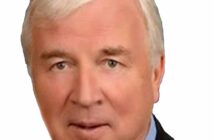
Ireland has the second highest passenger onboard spend per head of any country. Royal Caribbean Group has reported in its report for the first quarter of 2025.
The company reported net earnings of $730m for Q1 2025, a significant increase from $360m compared to the same period last year.
Total revenue reached $3.999bn for 2025, showing an increase from $3.728bn in the previous year, with a rise in ticket prices contributing to this growth.
The costs decreased to $237.43 per passenger day from $256.12 the previous year, resulting in a reduction of $18.69 in overall costs per passenger day.
The increase in net income was driven by higher ticket prices, which rose to $199.30 per passenger day, and a modest increase in onboard spending.
A written statement shared: “The result of moderately higher revenue and significantly lower costs per passenger day generated net income of $53.02 per passenger day up from $27.38 last year.”
Jason Liberty’s earnings call
On the earnings call, CEO Jason Liberty shared that wave season was the best in company history and there was no ipmact so far from Trump tariff threats: “At this point, it’s still too early to determine how exactly the current macro environment could impact the broader economy or consumer behavior. What I want to emphasize is that we are focused on what we can control delivering the best vacation experiences for our guests, optimizing revenue, managing costs and executing on our long-term strategies.”
“During the first quarter, bookings outpaced last year across all products resulting in the best wave season in the company’s history. In the month of April, bookings for 2025 are outpacing last year with close-in bookings trending particularly well. Our book position is in line with prior years at higher APDs.
“Bookings for 2025 have remained on track, cancellation levels are normal, and we continue to see excellent close-in demand. This year continues our guest experience innovation with the debut of Star of the Seas, Celebrity Xcel, and the opening of Royal Beach Club Paradise Island by year-end – all of which continue to generate consumer excitement and strengthen our competitive moat.”
“Onboard spend and pre-cruise purchasing continues to exceed prior years at higher prices. All commercial channels are generating quality demand with particular strength in our direct-to-consumer channels. As always, we continue to possess a nimble and flexible sourcing model, both geographically and demographically, with the ability to source quality demand all over the globe.”
“We are certainly not immune to macro volatility, but what we’re seeing on the ground in our bookings and the real time spending occurring on our ships is that consumers are still prioritizing experiences, planning to spend more on them this year and are seeking value that we are well positioned to offer.”
As we navigate the complexities of the current macroeconomic landscape, we remain focused on what we can control — delivering the best vacation experiences, optimizing revenue, and managing costs, while continuing to invest in our future and drive further differentiation. With our industry-leading brands, state-of-the-art ships, exclusive destinations, and a fortified balance sheet, we will continue dreaming and innovating to win a greater share of the growing $2 trillion global holiday market.”
Highlights from Q1 report
- First quarter total revenues were $4.0bn, Net Income was $0.7bn or $2.70 per share, Adjusted Net Income was $0.7bn or $2.71 per share, and Adjusted EBITDA was $1.4bn. Load factor in the first quarter was 109pc. Gross Margin Yields were up 13.9pc as-reported. Net Yields were up 4.7pc as-reported and 5.6pc in Constant Currency.Gross Cruise Costs per Available Passenger Cruise Days (“APCD”) decreased 1.1pc as-reported. Net Cruise Costs (“NCC”), excluding Fuel, per APCD decreased 0.3pc as-reported and increased 0.1pc in Constant Currency.
- Full year 2025 outlook yields are expected to increase 2.5pc to 4.5pc as-reported (2.6pc to 4.6pc in Constant Currency). NCC, excluding fuel, per APCD are expected to be 0.1pc to 1.1pc as-reported and (0.1pc) to 0.9pc in constant currency. Adjusted EPS is expected to grow approximately 28pc year-over-year and be in the range of $14.55 to $15.55.
- Net Income for the first quarter of 2025 was $0.7bn or $2.70 per share compared to Net Income of $0.4bn or $1.35 per share for the same period in the prior year. Adjusted Net Income was $0.7bn or $2.71 per share for the first quarter of 2025 compared to Adjusted Net Income of $0.5bn or $1.77 per share for the same period in the prior year. The company also reported total revenues of $4.0bn and Adjusted EBITDA of $1.4bn.
- Capacity for the first quarter was up 3pc year over year and the company delivered cruises to 2.2m guests, a 9pc increase year over year. Gross Margin Yields increased 13.9pc as-reported, and net yields increased 4.7pc as-reported (5.6pc in Constant Currency), when compared to the first quarter of 2024. Load factor for the quarter was 109pc. Net Yield growth exceeded the company’s guidance mainly due to higher pricing across key products driven by strong close-in demand.
- Gross Cruise Costs per APCD decreased 1.1pc as-reported, compared to the first quarter of 2024. NCC, excluding Fuel, per APCD decreased 0.3pc as-reported (and increased 0.1pc in Constant Currency), when compared to the first quarter of 2024.
- Ryal Caribbean took record bookings during WAVE season. Additionally, during April, the company’s bookings were greater than the same period last year, including continued strength in close-in bookings. Booked load factors remain in line with prior years and at higher rates. Ireland has the second highest passenger onboard spend per head of any country. On board spend and pre-cruise purchases continue to exceed prior years driven by greater participation at higher prices. To account for broader external factors, the company has expanded its guidance ranges in response to the complexity of the current macroeconomic landscape.
- The cadence of yield growth throughout the year, as expected, is driven by the timing of new hardware entering service, with the arrival of Star of the Seas in late summer and the related ramp-up of load factors, as is typical for new ship launches.
- Capacity in the second quarter is expected to increase 6pc, driven by lower dry dock days and a full year of Utopia of the Seas, compared to second quarter 2024. Net Yields are expected to increase 4.4pc to 4.9pc as-reported and 4.3pc to 4.8pc in Constant Currency as compared to the same period in the prior year. The expected growth in yield is driven by healthy demand across all key products and onboard spend, both from new and like-for-like hardware.
- NCC, excluding Fuel, per APCD, is expected to increase 4.1pc to 4.6pc as-reported and 3.7pc to 4.2pc in Constant Currency as compared to the same period in the prior year. Approximately 140 bps of cost growth is attributable to the timing shift from the first quarter.
- Based on current fuel pricing, interest rates, currency exchange rates and the factors detailed above, the company expects second quarter Adjusted EPS to be in the range of $4.00 to $4.10.
- Fuel bunker pricing, net of hedging, for the first quarter was $655 per metric ton and consumption was 423,000 metric tons. Based on current fuel prices, the company has included $286m of fuel expense in its second quarter guidance at a forecasted consumption of 428,000 metric tons, which is 59pc hedged via swaps. Forecasted consumption is 59pc, 55pc, 45pc, and 15pc hedged via swaps for 2025, 2026, 2027, and 2028, respectively. The annual average cost per metric ton of the hedge portfolio is approximately $487, $476, $393, and $426 for 2025, 2026, 2027, and 2028, respectively.



